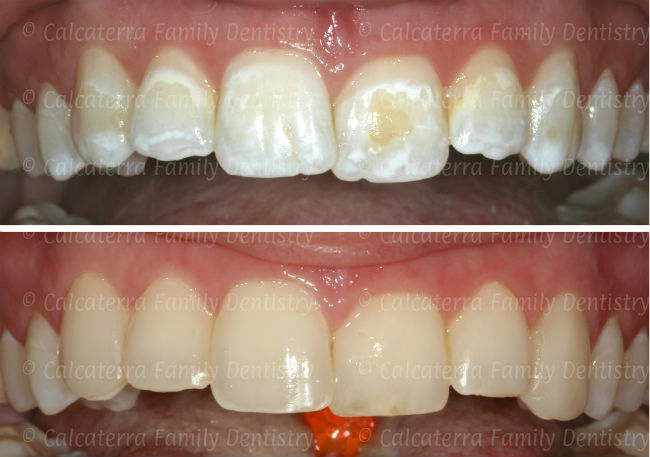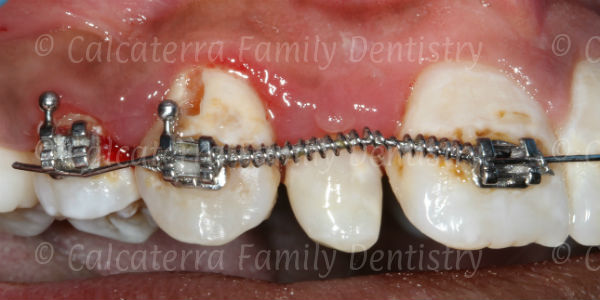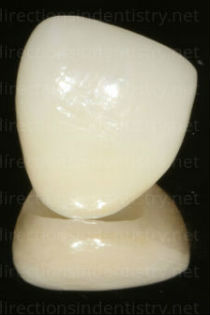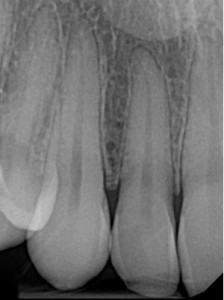In our office, we restore tons of dental implants. So naturally, we keep abreast of the latest techniques in creating teeth that look, feel, and function like real ones.
And because we like to post so much implant information and photos on this site, we get lots of patients who ask us great questions. Recently, we’ve had a lot of inquiries on cemented versus screw-retained crowns. So we decided to do a post on it!
Screw Retained Implant Crown Photos
Below is a photo of one of many cases we’ve completed recently:
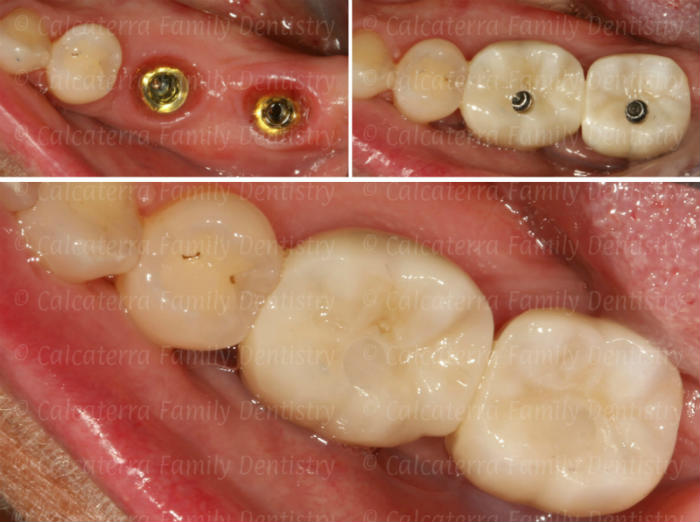
Photos of screw retained implant crowns. She went from bare implants to two new teeth in 45 minutes. Dentistry and photos Dr. Nicholas Calcaterra.
In the above case, you can see the screw heads peeking through the crowns in the second photo. We then placed a small filling over each screw head. She received two teeth in less than hour. By using this design, we did not need to use cement. But why did we choose screw-retained crowns?
Reasons for Screw-Retained Implant Crowns
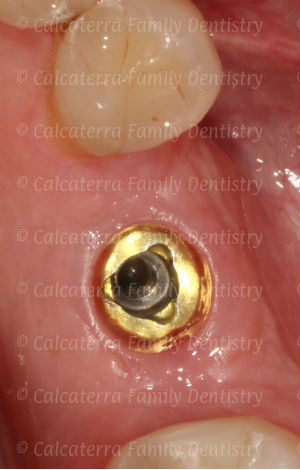
Excess cement around this implant can lead to failure.
In the past, many dental implant crowns were cemented on. This can lead to two potential issues:
- Retrievability: when a crown is cemented on, it cannot be removed without destroying it. So if there is ever an issue down the road, there is no easy way to address it without cutting off the crown.
- Implant Failures: research is showing that excess cement remaining on an implant after cementation can lead to implant failure. It can be difficult to find and locate all the excess cement that might remain.
When a crown is held on by a screw, it can be removed within 5 minutes if there is ever a problem. And since there is no cement used, there is no potential for failure due to excess cement.
So why not Use Screw-Retained Crowns all the Time?
That’s a great question! In many cases, the screw hole can affect the esthetics. This usually is not an issue for back teeth like molars. But when it comes to a front tooth crown, we have to take every single detail into account.
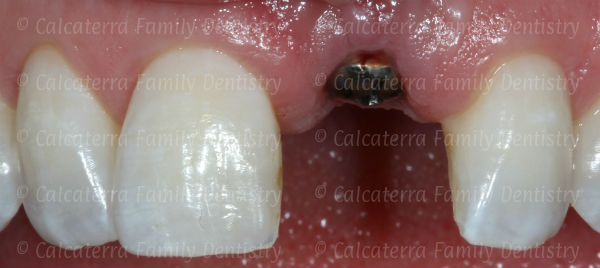
In restoring this front tooth dental implant, we had to use cement. Photo and dentistry Dr. Nicholas Calcaterra.
In the above case, the screw hole would have affected the esthetics. And given that it is a front tooth – we want and need perfection. So in these types of cases we typically use cemented-on crowns.
Are you interested in implants? Do you have an implant but not a crown yet? Call us at (203) 799 – 2929 if you would like to know your options.
Reference on the the dangers of excess cement: The positive relationship between excess cement and perio-implant disease: A prospective clinical endoscopic study. Wilson TG Jr., Journal of Periodontology, 2009 80(9) : 1388 – 92).
